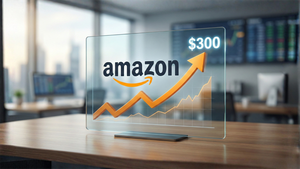
GameStop's (NYSE: GME) strategic pivot towards a digital-first, e-commerce-driven model, augmented by ventures into collectibles and blockchain gaming, represents a critical juncture for the iconic, yet beleaguered, video game retailer. This transformation, spearheaded by activist investor and CEO Ryan Cohen, aims to resuscitate a company long dependent on a dwindling physical retail market. While recent profitability, primarily fueled by aggressive cost-cutting, offers a glimmer of hope, the question remains whether this strategic shift provides a sustainable long-term growth path or exposes GameStop to significant risks in an intensely competitive digital landscape.
The company's audacious move, born out of necessity as digital game distribution increasingly dominates the industry, seeks to redefine its identity. GameStop is striving to shed its image as a relic of a bygone era, instead positioning itself as a modern, technology-focused entity ready to embrace the future of gaming and digital commerce. However, this reinvention comes with formidable challenges, including fierce competition from established tech giants and the inherent volatility of nascent markets like Web3 gaming and cryptocurrencies.
The Phoenix Project: GameStop's Digital Metamorphosis
GameStop's journey into the digital realm is a multifaceted undertaking, meticulously engineered to shift its operational core. The strategy encompasses a significant overhaul of its e-commerce capabilities, a strategic de-densification of its physical footprint, and a bold diversification into new product categories and technologies.
The timeline of this transformation is largely intertwined with the arrival and influence of Ryan Cohen (NYSE: GME). In August 2020, Cohen, co-founder of Chewy (NYSE: CHWY), disclosed a substantial stake, advocating for a radical digital-first approach. By January 2021, Cohen and two associates joined GameStop's board, leading a special committee focused on accelerating digital transformation. A flurry of key executive hires, predominantly from Amazon (NASDAQ: AMZN) and Chewy, followed in early to mid-2021, including Matt Furlong as CEO and Mike Recupero as CFO, bringing a wealth of e-commerce and logistics expertise. Cohen himself took the reins as CEO in September 2023, forgoing a salary.
Central to the pivot is a substantial investment in e-commerce enhancement, including upgrades to its online platform, AI-driven personalization, and a robust expansion of its fulfillment infrastructure. New, large-scale fulfillment centers were leased in York, Pennsylvania, and Reno, Nevada, in 2021, alongside a customer care center in Florida, all designed to expedite online order fulfillment.
Simultaneously, GameStop has engaged in a "strategic de-densification effort" of its physical stores, closing over 1,000 outlets in March 2021, nearly 600 U.S. stores in 2024, and planning further closures in 2025. This aims to streamline operations and reduce overhead, with remaining stores intended to serve as omnichannel hubs for in-store pickup and community engagement.
Diversification efforts are equally critical. GameStop has aggressively pushed into the high-margin collectibles market, including toys and trading cards like Pokémon and Magic: The Gathering, which now represent a significant portion of its sales. The company also made an impactful, albeit controversial, move into digital assets, launching an NFT marketplace in July 2022 and its own digital asset wallet. However, citing "regulatory uncertainty" and insufficient profitability, the NFT marketplace and wallet were shut down in February 2024. Despite this setback, GameStop continues to explore Web3 gaming through platforms like "GameStop Playr," partnering with the Telos Foundation and Elixir Games. Furthermore, in May 2025, GameStop announced a substantial acquisition of 4,710 Bitcoin (BTC), valued at up to $320 million, as part of its diversification plan.
Despite experiencing declining revenues—net sales decreased by 28.5% year-over-year in Q4 2024, and 17% in Q1 2025—GameStop achieved profitability for four consecutive quarters as of Q1 fiscal 2025. This profitability, however, has been largely attributed to aggressive cost-cutting and tighter operational discipline rather than robust revenue growth from new initiatives.
The Shifting Sands: Market Winners and Losers
GameStop's digital pivot sends ripple effects across the retail and gaming industries, creating both potential winners and losers as the market adapts.
GameStop (NYSE: GME) itself stands as a primary potential winner if its digital transformation proves successful. The company's ability to effectively integrate its enhanced e-commerce platform, grow its high-margin collectibles segment, and successfully establish its presence in Web3 gaming could secure a sustainable future. Their strategy of offering discounts on digital games through its Pro membership, a unique value proposition, could attract and retain a loyal customer base. The strong cash position, including a significant Bitcoin (BTC) investment, provides a financial cushion, although it also introduces volatility.
Microsoft (NASDAQ: MSFT) emerges as a clear beneficiary through its strategic partnership with GameStop. GameStop's adoption of Microsoft's cloud solutions (Dynamics 365, Microsoft 365, Teams) and hardware (Surface devices) strengthens Microsoft's enterprise foothold in the retail sector. Additionally, GameStop's offering of Xbox All Access could drive subscriptions to Xbox Game Pass Ultimate and increase Xbox console sales.
Gaming Publishers and Developers could indirectly benefit from GameStop's initiatives to offer discounts on digital games via its Pro membership. While GameStop might earn a lower margin, increased accessibility and incentivization for consumers to buy new digital titles could expand the overall digital customer base for publishers.
On the losing side, legacy physical retailers, especially those heavily reliant on physical game sales like Best Buy (NYSE: BBY) and Target (NYSE: TGT), might face continued erosion in their gaming segments. GameStop's active embrace of digital further validates the declining physical market, putting more pressure on any remaining pure-play physical game retailers to adapt or face obsolescence.
E-commerce giants like Amazon (NASDAQ: AMZN) and Walmart (NYSE: WMT), while vast and dominant, could face increased competition in the niche gaming retail segment. If GameStop successfully differentiates its digital offerings, particularly with membership benefits, it could chip away at these giants' gaming-related sales, though their scale provides a substantial buffer against significant impact.
Traditional game distribution companies involved in the manufacturing and logistics of physical game discs will continue to see declining demand. GameStop's pivot is a direct response to this industry-wide shift, acknowledging the shrinking physical media market.
Lastly, GameStop's brief foray into and subsequent withdrawal from the NFT marketplace meant that other NFT marketplaces, such as OpenSea, likely experienced minimal long-term competitive pressure from GameStop in that specific segment.
Industry Tides: Broader Implications and Historical Echoes
GameStop's strategic pivot is not an isolated event but rather a microcosm of broader tectonic shifts occurring across the retail and gaming industries. Its efforts to transform fit squarely within the larger trends of digital transformation, the rise of e-commerce, the emergence of NFTs and blockchain in gaming, and the burgeoning metaverse.
In retail, the imperative for digital transformation is undeniable. Consumers demand seamless omnichannel experiences, AI-driven personalization, and efficient online shopping. GameStop's investment in its e-commerce platform, logistics, and AI-driven recommendations directly addresses these trends, mirroring the paths of successful digital adapters like Walmart (NYSE: WMT) and Nike (NYSE: NKE). These companies invested heavily in technology, supply chain optimization, and direct-to-consumer models, successfully navigating the e-commerce wave. GameStop's challenge is to execute with similar agility and scale.
Within the gaming industry, the shift to e-commerce is even more pronounced. Digital distribution platforms like Steam, PlayStation Store, and Xbox Store have fundamentally altered game acquisition, offering instant access and convenience. GameStop's enhanced e-commerce capabilities are a necessary defense against these entrenched digital giants. Its initial, albeit temporary, foray into NFTs and blockchain gaming was an attempt to capitalize on the nascent trend of digital ownership and new economic models like "play-to-earn" games, signaling an awareness of the metaverse's potential impact on retail and gaming.
The ripple effects of GameStop's moves are significant. For traditional retailers, its aggressive store closures and digital focus serve as a stark reminder of the need for rapid adaptation. If GameStop finds success in its specialized niche (collectibles, Web3 gaming), it could compel larger digital platforms to further explore or expand their own blockchain and NFT strategies, influencing how they engage with digital assets. For game publishers and developers, GameStop's Web3 gaming initiatives, such as "GameStop Playr," represent a potential new distribution channel for digital assets, which could influence future game development towards incorporating blockchain elements.
Regulatory implications for GameStop's digital asset ventures remain complex. The closure of its NFT marketplace highlighted the "regulatory uncertainty" surrounding NFTs, particularly concerns over ownership, intellectual property, and whether digital assets classify as securities. The company's substantial Bitcoin (BTC) investment also places it within a volatile and evolving regulatory landscape, subject to varying international policies on cryptocurrency. Future success in this realm will depend on clear legal frameworks and a collaborative approach between industry players and regulators.
Historically, GameStop's struggle and transformation can be compared to the cautionary tale of Blockbuster, which famously failed to adapt to the digital streaming revolution led by Netflix (NASDAQ: NFLX). GameStop's aggressive pivot is a clear attempt to avoid such a fate, actively disrupting its own traditional model. Conversely, its journey also echoes the failures of companies like Sears, whose digital efforts were "too little, too late." GameStop's ongoing challenge is to execute its digital strategy effectively and quickly, proving that a legacy retailer can successfully reinvent itself for the digital age.
The Road Ahead: What Comes Next for GameStop
GameStop's future trajectory hinges on a delicate balance of seizing emerging opportunities, overcoming formidable challenges, and continuous strategic adaptation. Both short-term maneuvers and long-term visions will define its sustainability.
In the short term, GameStop will likely continue its aggressive focus on e-commerce expansion and optimization, aiming to provide a seamless online shopping experience and capture a larger share of the digital market. The robust growth in its collectibles market (trading cards, toys) is a crucial area to nurture, as it provides high-margin revenue that offsets declines in traditional physical game sales. GameStop's substantial cash reserves and reduced debt offer a strong financial buffer for these investments, but also raise expectations for strategic deployment. The success of its GameStop Pro membership, with its unique discounts on digital games, will be key to attracting and retaining loyal customers.
However, short-term challenges persist. The fundamental decline in physical game sales continues to pressure core revenues, and GameStop faces intense competition from established e-commerce giants and digital storefronts. While profitability has been achieved, it's largely driven by cost-cutting, and sustainable revenue growth from new initiatives is still a significant hurdle. The volatility introduced by its substantial Bitcoin (BTC) investment adds another layer of financial risk.
Looking long-term, GameStop aspires to transform into a specialized platform focusing on niche markets like high-value collectibles, esports, and a community hub for gaming culture. The potential for a hybrid retail experience, seamlessly integrating enhanced e-commerce with optimized physical stores, could differentiate it. Remaining stores might evolve into experience centers for gaming events and product demonstrations, fostering deeper community engagement. Continued investment in AI for personalized recommendations and operational efficiency will be critical.
The most ambitious long-term play lies in its Web3 gaming initiatives, particularly "GameStop Playr." While the NFT marketplace was a misstep, GameStop's continued exploration of blockchain-based gaming platforms could position it in a growing, albeit volatile, market. Emerging opportunities in cloud gaming and virtual/augmented reality (VR/AR) could also offer avenues for hardware, software, and accessory sales.
However, long-term challenges are significant. Analysts project continued revenue decline, and a clear, sustainable path to top-line growth from diversification remains unproven at scale. Maintaining the relevance of a physical retail footprint in a digital world is a fundamental dilemma. Moreover, without finding truly transformative new revenue streams, GameStop may struggle to justify its current market valuation. The regulatory landscape for cryptocurrencies and Web3 remains uncertain, posing risks for any future digital asset ventures.
Various scenarios could unfold:
- Bullish Scenario (Transformative Success): GameStop successfully executes its digital transformation, becoming a leading omnichannel retailer for gaming culture and collectibles. E-commerce gains significant market share, collectibles explode, and physical stores become vibrant community hubs. Investments in Web3 and emerging technologies create new, sustainable revenue streams, leading to consistent profitability and substantial stock appreciation.
- Base Case Scenario (Managed Decline & Niche Survival): GameStop manages its decline in physical sales through cost-cutting and efficient operations. Collectibles provide a partial offset, but overall revenue growth is modest. The e-commerce platform improves but struggles against larger competitors. Profitability is maintained mainly through cost management. The stock remains volatile, influenced more by market sentiment than consistent business growth.
- Bearish Scenario (Continued Decline & Obsolescence): Digital transformation efforts fail to gain significant traction. Collectibles growth is insufficient to offset accelerating declines in core business. E-commerce struggles to differentiate, and physical store reimagination falters. Bitcoin investments become a liability. GameStop struggles for relevance, leading to persistent revenue decline, eroding profitability, and a significant drop in stock price.
Final Thoughts: A High-Stakes Wager on the Future
GameStop's strategic shift is a compelling, high-stakes wager on the future of retail and gaming. It's a necessary evolution for a company staring down obsolescence, attempting to rewrite its narrative from a physical retail dinosaur to a digital-savvy innovator. While recent profitability, driven by disciplined cost management, is a positive signal, it masks the underlying challenge of generating sustainable, diversified revenue growth in a fiercely competitive market.
The closure of its NFT marketplace serves as a stark reminder of the risks and immaturity of certain nascent markets. However, its continued investment in Web3 gaming platforms and a significant Bitcoin (BTC) acquisition underscore a persistent belief in the potential of digital assets. The growth in collectibles is a tangible, encouraging development, providing a more immediate pathway to profitability and diversification.
Moving forward, GameStop's lasting impact will hinge on its ability to effectively integrate its e-commerce capabilities, cultivate a loyal community around its unique offerings, and prove the scalability of its new ventures. The company's future remains a fascinating case study in corporate reinvention.
For investors, the coming months demand vigilance. Watch closely for concrete signs of GameStop Playr's performance—user growth, game adoption, and revenue generation from its Web3 gaming platforms. Monitor revenue stabilization and growth, particularly how the digital and collectibles segments contribute to the top line, rather than relying solely on cost-cutting for profitability. The momentum of the collectibles segment is crucial; assess if its growth is sustainable and how the partnership with PSA (for trading card grading) impacts this. Keep an eye on the Bitcoin (BTC) investment performance, as crypto market volatility will directly affect GameStop's balance sheet. Finally, scrutinize capital allocation—how are those substantial cash reserves being deployed for strategic investments, and what is the impact of any further shareholder dilution?
GameStop remains a volatile stock, heavily influenced by retail investor sentiment. Conservative investors may prefer to observe from the sidelines until clearer signs of sustainable operational growth and reduced reliance on speculative ventures emerge. Aggressive investors, however, may continue to see opportunities in its bold strategic bets on the evolving landscape of gaming and digital assets. The ultimate outcome remains an unfolding saga in the annals of modern business transformation.





